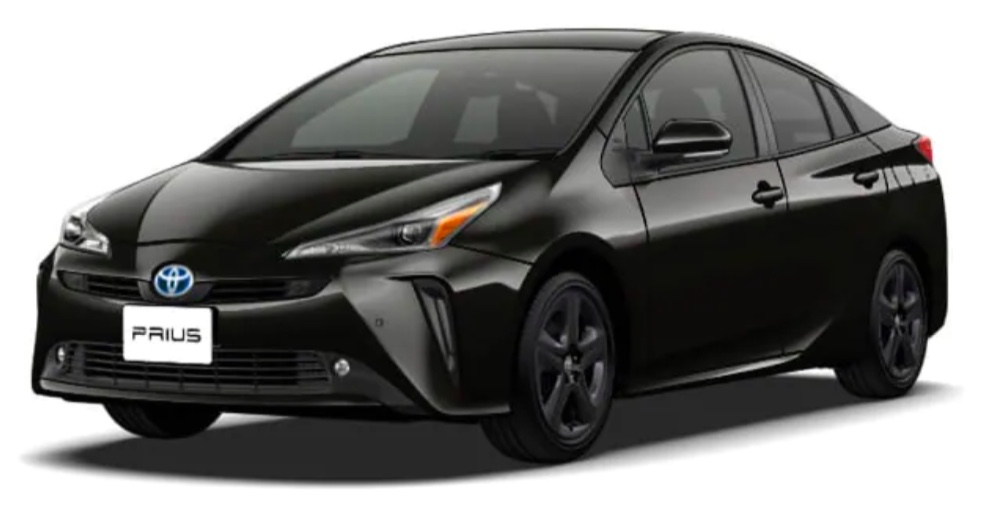Prius, the ultimate eco-car
The world’s first mass-produced hybrid vehicle was introduced in December 1997. The Toyota Hybrid System (THS), combines a Miller cycle gasoline engine and a permanent magnet synchronous motor to generate power. At the time, the Corolla sold for 1,527,000 yen. The Prius was priced at 2,150,000 yen, a relatively expensive car for its size, and its sales volume did not increase much. Even so, it’s the astonishing fuel economy of 28 km/L (31 km/L in the final model) sent shockwaves around the world. This was enough of an impact to launch the history of hybrids. The second generation was introduced in 2003. It was equipped with THS II, a greatly improved version of the first generation’s hybrid unit, and marked the moment when the prototype for the Toyota Hybrid, which continues to this day was created. In 2009, the third-generation Prius was introduced, an explosive hit that made the Prius a national car, and in 2015, it evolved into the fourth generation (current model) that uses the TNGA platform. Over the past quarter century, the Prius has developed a solid image as a a car that is good for the global environment. Even Hollywood stars, who could drive more luxurious cars, have chosen the Prius as their personal cars, saying, “Just by driving it, I feel like a person who takes environmental issues seriously. On the other hand, the Prius has been said to have a hybrid battery that will soon fail and be insufficiently durable, but it has defied all such criticisms. Today, the Prius is probably one of the most durable and long-lasting cars ever made. Although people tend to focus on advanced technology, the Prius has a solid foundation as a car. A durable, long-lasting, fuel-efficient vehicle, the Prius is a pioneer and a true eco-car.
The Impact of the Prius on Dealerships
The third-generation Prius, a smash hit, was a shocking car for dealers. The Prius sold itself without any sales or promotional activities. Most of the customers who came to the dealership wanted a Prius, and the test-drive fleet was always at total capacity. Contracts were being signed without any significant discounts. You don’t have to work hard to make a sale; you can just wait in the showroom. I don’t think there has ever been a car with such a strong product lineup. The Aqua sold in a similar fashion, but the Prius had a more significant impact. Also, while the Prius itself sold well, it also contributed to the sales of other models. This is another area where the presence of the Prius is strongly felt. For users who came to the store to purchase a Prius, but whose annual mileage is short and who have few opportunities to use the car, the Prius is relatively expensive. In such cases, we suggested a pure gasoline car instead of a hybrid. Examples include the Arion, Premio, and Porte. The Prius effect helped to boost sales of these cars. The Prius sold naturally due to its high product appeal, and other models sold through proposal-based sales, a specialty of Toyota dealers. At the time, it was the popularity of the Prius and its ability to attract customers that supported the fundamentals of sales. The author believes that one of the reasons why the current style of waiting for customers in showrooms and selling new cars has taken root is because of the sales revolution caused by the Prius.
The HEV Rampage Today
It was a long time ago that the Prius was the only hybrid. Nowadays, Corolla, Crown, Alphard, Harrier, and even Century are hybrid models. Combinations, which used to be special, have already reached the commonplace. The Prius, the world’s first mass-produced hybrid vehicle, brought hybrids to the level of the commonplace. Although the Prius may seem to have completed its role in popularizing hybrid vehicles and is no longer needed, the author believes that the Prius still has a role to play. How far can a car evolve in the one-motion style of the Prius, which is neither a sedan, hatchback, or station wagon? The challenge is far from over. Because it has a long history and is not bound by the stereotypes of being a Corolla or a Crown, the Prius can be made to be a car that is fun to drive and a joy to drive, after aerodynamics, weight reduction, and other factors have been refined to the utmost limit. Of course, I hope that the world’s top-level fuel economy will continue to improve. When it was first introduced, the Prius was called the ultimate eco-car. The role of the Prius will always be to be the ultimate eco-car. Whether it is an HEV, PHEV, BEV, or FCV, we do not know. Perhaps a completely different power source will be adopted. I think the supreme mission of the Prius is to explore this and sublimate it into the form of a car. This winter, 25 years after its birth, the Prius is sure to offer us another new proposal. The evolution of the Prius, a world-class symbol of Japanese technology, has continued and will continue.




Comments